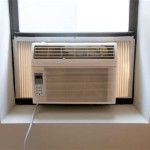Egress Window for Basement Code: Ensuring Safety and Compliance
Egress windows in basements are not merely an aesthetic addition; they serve as critical safety features mandated by building codes. These codes are implemented to ensure occupants have a safe and accessible escape route in the event of an emergency, such as a fire. This article will delve into the specific requirements outlined in building codes, particularly the International Building Code (IBC) and the International Residential Code (IRC), regarding egress windows in basements. Understanding these codes is essential for homeowners, contractors, and builders alike to guarantee compliance and prioritize the safety of residents.
The primary function of an egress window is to provide a secondary means of escape from a basement in case the primary exit, typically the staircase, is blocked or unusable during an emergency. They also serve as an entry point for firefighters and other emergency personnel. Consequently, these windows must meet specific size and accessibility standards to facilitate swift and safe evacuation and rescue operations. Failure to comply with these regulations can lead to fines, legal repercussions, and, more importantly, compromise the safety of the building's occupants.
Minimum Size Requirements for Egress Windows
One of the most crucial aspects of egress window code compliance is adhering to the minimum size specifications. These dimensions are designed to accommodate individuals of varying sizes and abilities, including firefighters wearing equipment. The IRC and IBC outline precise measurements for the window's net clear opening, width, height, and sill height.
The net clear opening refers to the actual open space of the window when fully opened, measured in square feet. The minimum net clear opening typically required is 5.7 square feet. This measurement ensures that a person can readily pass through the opening in an emergency. It's important to note that the entire window frame does not contribute to the net clear opening; only the unobstructed space when the window is open is considered.
In addition to the net clear opening, minimum width and height specifications are also stipulated. The minimum width of the egress window opening is generally 20 inches, while the minimum height is 24 inches. These dimensions are intended to prevent obstructions and ensure that a person can navigate the opening without significant difficulty.
The sill height, defined as the distance from the floor to the bottom of the window opening, is another critical component of the egress window code. Most codes mandate a maximum sill height of 44 inches above the floor. This limitation is in place to prevent individuals from having to climb excessively to reach the window, particularly during an emergency when mobility might be compromised.
Furthermore, window wells are often necessary for basement egress windows, especially when the ground level is at or above the window opening. These wells must also meet specific size requirements to ensure easy access to the window. Typically, a window well must have a minimum projection (depth) of 36 inches and a minimum width of 36 inches. The purpose of these dimensions is to provide adequate space for a person to stand comfortably and operate the window.
It's vital to consult the specific local building codes, as these regulations can vary from jurisdiction to jurisdiction. Local amendments may impose stricter requirements or offer clarifications that are not present in the national codes. Regular updates to the building codes also occur, so verifying the most current version is crucial for any construction or renovation project.
Operational Requirements and Accessibility
Beyond the size of the egress window, its operational characteristics and accessibility are also critical considerations for code compliance. The window must be easily operable from the inside without the use of special tools or knowledge. This requirement aims to ensure that anyone, regardless of their physical abilities, can quickly open the window and escape during an emergency.
The window opening mechanism must be simple and intuitive. Complicated locking mechanisms or devices that require significant force to operate are generally not compliant with egress window codes. Knobs, levers, or latches should be easily accessible and designed for swift operation, even under stressful conditions.
Accessibility also extends to the area surrounding the egress window. The floor area directly in front of the window must be free of obstructions that could impede egress. Furniture, boxes, or other items should not be placed in front of the window, as they could delay or prevent a person's escape. Clear and unobstructed access to the egress window is essential for its effectiveness as a safety feature.
For situations where a window well is necessary, a permanently affixed ladder or steps may be required if the depth of the well exceeds a certain limit. This ensures that occupants can easily climb out of the well and reach ground level. The ladder or steps must be sturdy and securely attached to the well to prevent accidents.
Regular maintenance of the egress window and its surrounding area is also crucial. The window should be inspected periodically to ensure that it opens and closes smoothly and that the locking mechanism is functioning properly. The window well should be kept clean and free of debris that could obstruct access. Neglecting maintenance can compromise the window's functionality and render it ineffective in an emergency.
Compliance and Inspection Procedures
Ensuring compliance with egress window codes involves several steps, including obtaining the necessary permits, adhering to the specific requirements during installation, and undergoing inspections by local building officials. Failing to obtain the required permits or neglecting to comply with the code can result in fines, delays, and the need for costly rework.
Before beginning any construction or renovation work involving egress windows, it is essential to consult with the local building department to determine the specific permit requirements. The permit application process typically involves submitting detailed plans and specifications for the proposed window, including its size, location, and operational characteristics. The building department will review these plans to ensure compliance with the applicable codes.
During the installation process, it is crucial to adhere strictly to the approved plans and specifications. Any deviations from the plans must be approved by the building department before proceeding. It is also essential to use qualified and experienced contractors who are familiar with egress window codes and installation procedures.
Once the installation is complete, a building inspector will conduct an inspection to verify that the window meets all the requirements of the code. The inspector will typically check the size of the window opening, the sill height, the operational characteristics, and the accessibility of the surrounding area. If any deficiencies are found, the homeowner or contractor will be required to correct them before the project can be approved.
Proper documentation is also an important aspect of compliance. Maintaining records of the permits, plans, specifications, and inspection reports can be helpful in resolving any future disputes or questions about the window's compliance. These records can also be valuable when selling the property, as they provide assurance to potential buyers that the window meets all the applicable codes.
In conclusion, egress windows are essential safety features in basements, and adherence to building codes is paramount. Understanding the minimum size requirements, operational specifications, and compliance procedures is crucial for homeowners, contractors, and builders to ensure the safety of building occupants and avoid legal repercussions. Regular inspections and maintenance are also vital to guarantee the long-term functionality of the egress window.

Egress Windows Sizing And Requirements Explained

Egress Windows Sizing And Requirements Explained

Egress Window Size A Beginner S Guide Epp Foundation Repair

Inspecting Basement Egress Rescue Openings Signature Property Inspection

Basement Egress Window Requirement Designer

Egress Windows Building Codes Regulations And Specifications

Basement Egress Windows

What Is The Irc Code

Egress Windows Code And Requirements

Egress Window Size A Beginner S Guide Epp Foundation Repair
Related Posts







